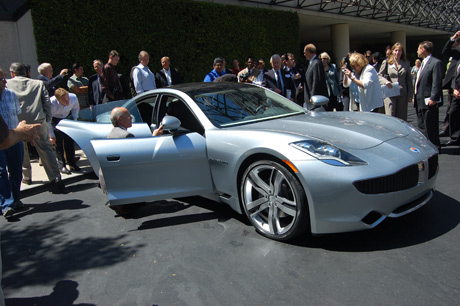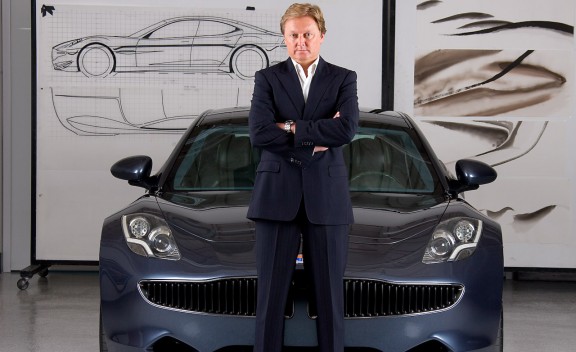 Henrik Fisker brought a special guest along when he spoke at a luncheon in Ivine, CA. this week. That guest was none other than the Fisker Karma. Just in the past couple of weeks many have seen the car doing the track run at Laguna Seca. However, very few have seen one out on the street. As we can see that is about to change. It appears that Fisker is getting much more comfortable with there currrent version of the production model. Many have questioned if the time has passed for such activities to begin. We say it couldn’t be better.
Henrik Fisker brought a special guest along when he spoke at a luncheon in Ivine, CA. this week. That guest was none other than the Fisker Karma. Just in the past couple of weeks many have seen the car doing the track run at Laguna Seca. However, very few have seen one out on the street. As we can see that is about to change. It appears that Fisker is getting much more comfortable with there currrent version of the production model. Many have questioned if the time has passed for such activities to begin. We say it couldn’t be better.
For the dozens of folks in attendance who saw the car live for the first time, there was a collective gasp of excitement for the car’s sleek lines and luxurious, leather-clad interior.
And this wasn’t just a static display. As the photo-hungry crowd still busily snapped away, Fisker quietly — no, silently — slipped away down the road, in a 400-horsepower luxury beast that he hopes will change the way we see green. Stay tuned for how this electrifying race plays out.

Attendees at the Orange County Forum Luncheon get their First Taste of Karma
Of course not one to give up an opportunity mans health Henrik also made time to talk about future production plans and that oh so meaningful DOE loan. As important as a successful launch of the Karma is to Fisker, having the cash to quickly ramp up development of a low cost model is even more.
While speaking at an Orange County Forum luncheon Wednesday in Irvine, Fisker not only showed off a running version of the Karma in person, but also spoke about the ideology of his company and even shed a little — but only a little — more info about another car that the company has in the works.
He said his private company has already received “well over $100 million” in venture capital, and hopes it can obtain a Department of Energy loan to spur production of its next car, which Fisker aims to sell in the $40,000 range.
Fisker declined to reveal what kind of car this lower-cost, higher-volume one would be, but the goal is to eventually make 100,000 units a year, and — unlike the Finnish-built Karma — for them to be made in the United States.
[Source: OC Register]

